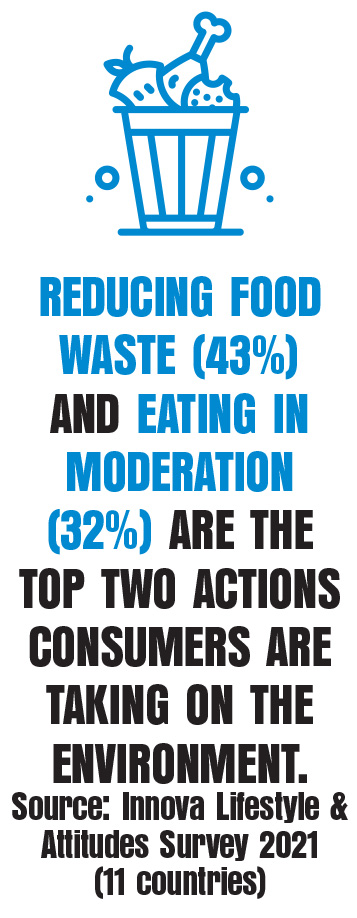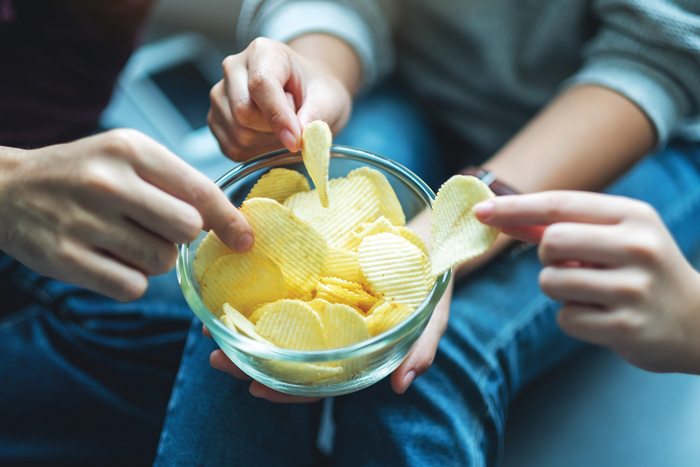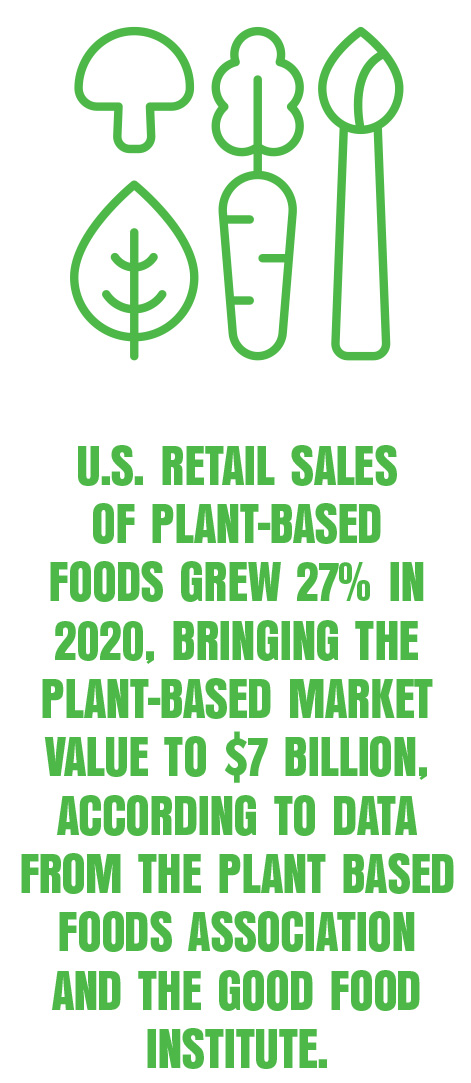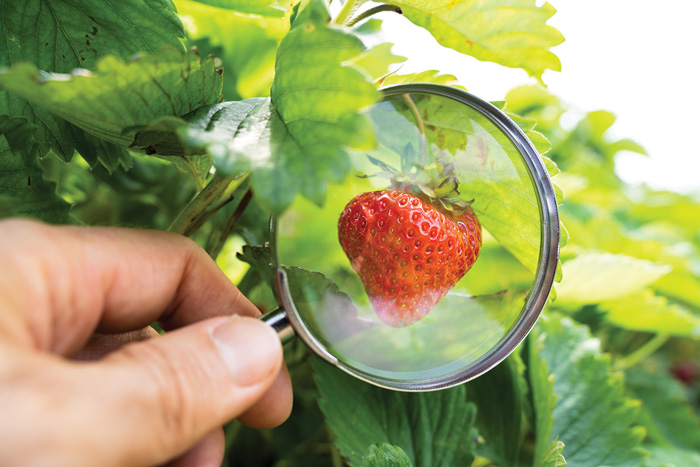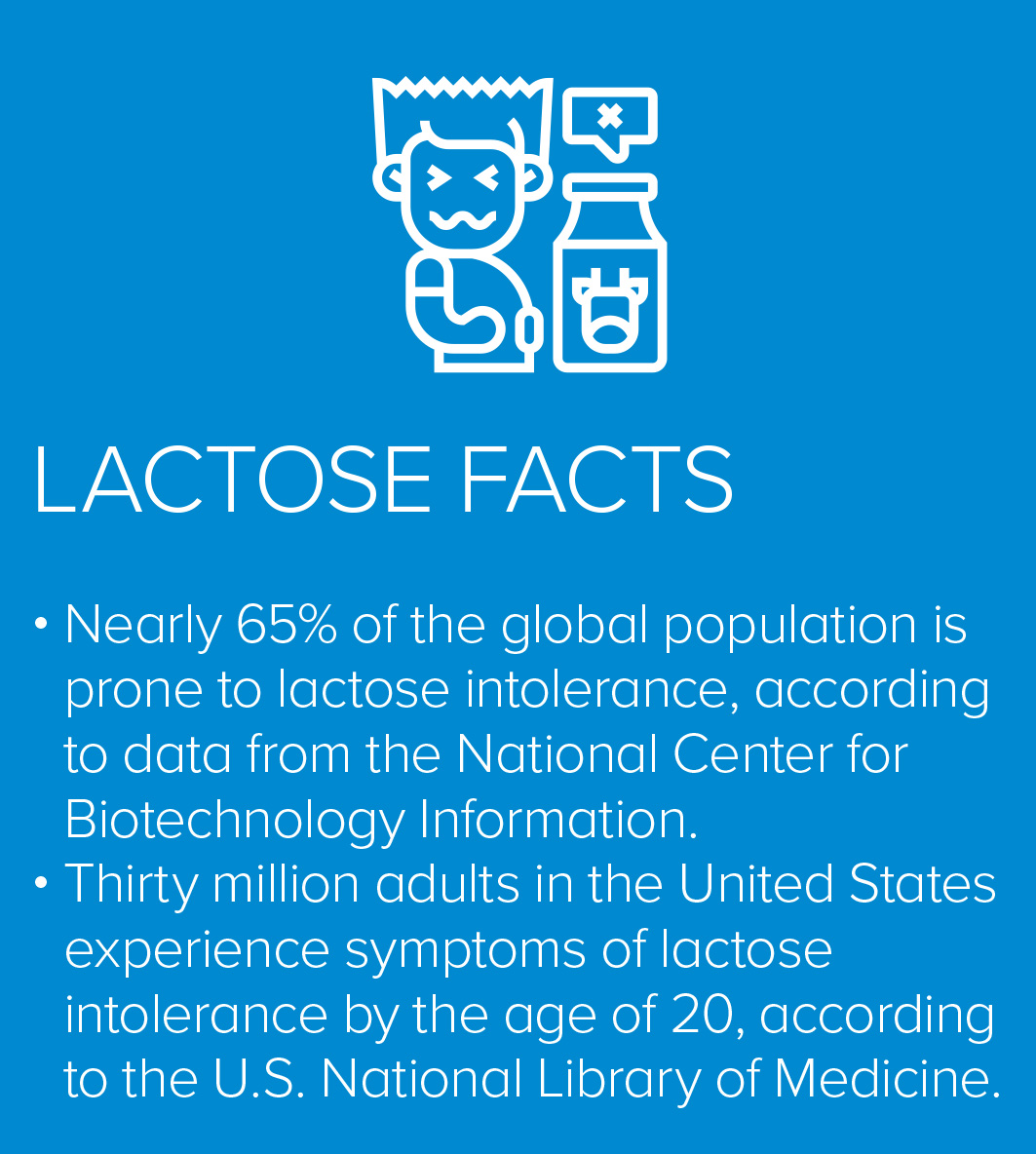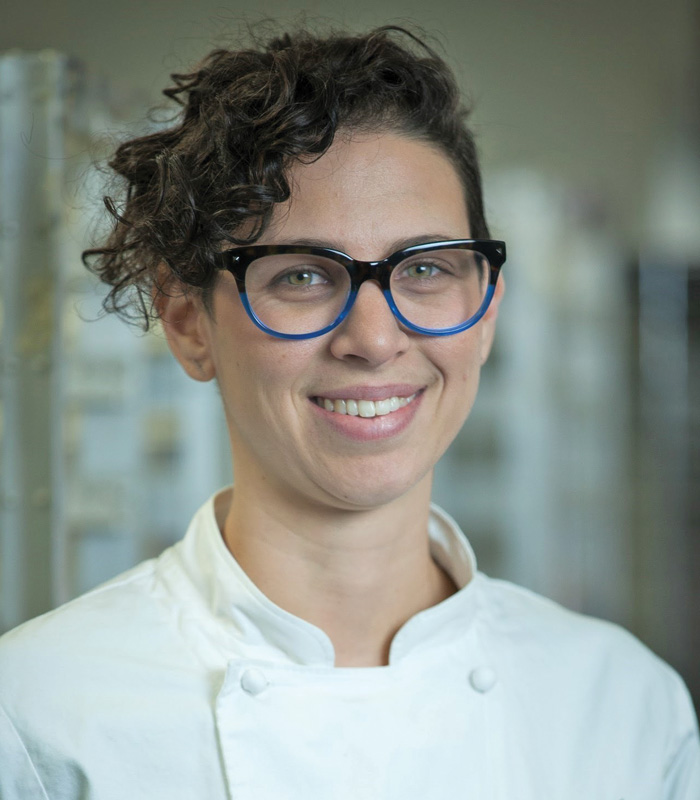Shared Planet Tops 2022 Trends; Paying Tribute to Louise Slade; and More
OMNIVORE
INDUSTRY
Shared Planet tops 2022 trends
CONSUMERS ARE LOOKING to shape a sustainable and prosperous future by taking joint responsibility for the environment through food and lifestyle choices, according to Innova Market Insights, which named “Shared Planet” the top trend for 2022. For food and beverage companies, this requires building trust with consumers by communicating clearly and transparently, and ensuring that a product’s life story can stand up to scrutiny.
“One of the biggest shifts we are seeing is that the health of the planet is now the top concern of consumers,” said Innova Global Insights Director Lu Ann Williams in a press release. “Personal health has been the big concern for the past few years, but consumers now tell us that this has been surpassed by global issues. Sustainability is no longer just a Wall Street issue. It might not be the top purchase driver for all consumers, but for many it clinches the deal when it comes to choosing between products.”
Rounding out the top five list are the following trends:
2. Plant-Based. The Canvas for Innovation. Plant-based R&D has evolved from mimicking meat, fish, and dairy to creating innovative options that stand on their own merits. Consumers’ desire for a varied diet, as well as products that feature indulgence and premium ingredients, is also furthering interest in plant-based products.
3. Tech to Table. Advances in technology are impacting product development from conception to consumption, with innovation opportunities affecting every aspect of the food and beverage industry. In addition, consumers are using apps and other tools that support their health and nutrition needs and have indicated their openness to embracing technological change and sharing data if food companies can show benefits to personal and global health.
4. Shifting Occasions. Eating occasions have shifted since the start of the COVID-19 pandemic, with consumers becoming more aware of the comforts and possibilities of home. Food industry leaders will be challenged to find new and better ways to serve evolving consumption occasions through the creation of products that spark interest for consumers whose social habits are changing.
5. Voice of the Consumer. Food and beverage companies have never been more challenged to meet the demand for products that align with consumers’ political, social, and ethical values. In the absence of such products, entrepreneurial consumers are increasingly taking action to fill their own needs by co-creating products that satisfy specific market niches.
Other trends rounding out Innova Market Insights’ Top 10 Trends for 2022 speak to authenticity, responsibility, and the simple craving for pleasure, with the following themes predicted to drive consumer actions in the coming 12 months: Gut Glory, Back to the Roots, Amplified Experiences, Upcycling Redefined, and My Food, My Brand.
AQUACULTURE
Future of blue foods
AQUATIC FOODS CAN play a greater role in delivering healthy diets and more sustainable, equitable, and resilient food systems, according to findings by marine ecologists at the University of California–Santa Barbara’s Bren School of Environmental Science & Management. The group recently published a series of five peer-reviewed papers on the aquatic food sector in the journal Nature.
In their review of hundreds of studies of seafood species, the scientists found many opportunities to leverage the diversity of “blue” foods to address malnutrition, lower the environmental impact of the food system, and provide livelihoods. The researchers project a doubling of global demand for blue foods by 2050, which will be met primarily through increased aquaculture production.
From a sustainability perspective, the majority of species raised in aquaculture environments, including tilapia, salmon, catfish, and carp, were found to have environmental footprints comparable to chicken, the lowest-impact terrestrial meat. Blue foods in general were also found to rank more highly than terrestrial animal-source foods in terms of their nutritional benefits. For example, compared with chicken, trout has approximately 19 times more omega-3 fatty acids; oysters and mussels have 76 times more vitamin B12 and five times more iron; and carp has nine times more calcium.
“For the first time we got to see what more aquatic food production would mean for human health globally,” said Christopher Free, Bren School marine ecologist and assistant researcher, in a press release. “What we project is that by making aquatic foods cheaper to the consumer, there’s likely going to be a shift away from land-based foods like chicken, beef, and dairy. I think what made us really excited is knowing that aquatic food could be a useful solution to combating malnutrition, and really showing that comprehensively for the first time.”
The five papers are the first in a series produced by the Blue Food Assessment, a group of more than 100 leading researchers led by Stanford University’s Center for Ocean Solutions & Center on Food Security and the Environment, the Stockholm Resilience Centre at Stockholm University, and the nonprofit EAT.
Consumer perspectives on cannabis
A recent survey by Canadian research firm SCS Consulting found that three-quarters of U.S. residents and almost 80% of Canadians now support cannabis legalization. In addition, consumer interest in edibles is growing, which suggests that the stigma surrounding cannabis is on the decline and that public policies need to change to reflect evolving acceptance of cannabis products in North America. To learn more about the survey results, visit iftexclusives.org/cannabis-survey.
CONSUMERS
Americans are consuming more ultra-processed foods
A NEW STUDY conducted by researchers at the New York University School of Global Public Health indicates that the average U.S. diet has shifted during the past two decades toward consumption of more ultra-processed foods, an eating pattern that some public health experts find concerning due to its association with a higher risk of chronic disease. Ultra-processed foods were defined as products that are industrially manufactured, ready-to-eat or -heat, include additives, and are largely devoid of whole foods.
The study, published in the American Journal of Clinical Nutrition, analyzed data from nearly 41,000 adults who took part in the Centers for Disease Control’s National Health and Nutrition Examination Survey from 2001 through 2018. Participants reported what they ate in the past 24 hours, with foods catalogued into four categories: minimally processed (whole foods), such as vegetables, fruits, grains, meat, and dairy; processed culinary ingredients, such as olive oil, butter, sugar, and salt; processed foods, such as cheese, canned fish, and canned beans; and ultra-processed foods, such as frozen pizza, soda, fast food, sweets, salty snacks, canned soup, and most breakfast cereals.
The researchers found that consumption of ultra-processed foods grew from 53.5% of calories during 2001–2002 to 57% during 2017–2018. The largest increase was in ready-to-eat or -heat meals, such as frozen dinners. In contrast, whole foods declined from 32.7% to 27.4% of calories consumed, due mainly to people eating less meat and dairy.
Given the growing intake of ultra-processed foods and their link to chronic diseases, the researchers recommend implementing policies to reduce their consumption, such as revised dietary guidelines, marketing restrictions, package labeling changes, and taxes on soda and other ultra-processed foods. They also support programs and policies to increase the availability, accessibility, and affordability of whole foods, especially among disadvantaged populations.
“In the current industrial food environment, most of the foods that are marketed to us are in fact industrial formulations that are far removed from whole foods. Nevertheless, nutritional science tends to focus on the nutrient content of foods and has historically ignored the health implications of industrial food processing,” remarked Filippa Juul, lead author of the study, in a press release.
SAFETY & QUALITY
Simplifying food fraud detection
FRAUDULENT FOOD PRODUCTION practices, especially related to geographical origin, result in billions of dollars of economic damage every year. But a new low-cost model for determining food origin can help stem economic losses, say botanists at the University of Basel who developed the tool.
Currently, a common method of detecting food fraud involves determining the δ18O (delta-O-18) value of a product sample to characterize the oxygen isotope ratio. Because the process requires reference data from the claim country of origin as well as data from other regions, it is both time-consuming and costly.
The model developed by the University of Basel botanists can simulate the oxygen isotope ratio in plants from individual regions, eliminating the need for reference data. The model uses temperature, precipitation, and humidity data as well as information about the growing season of a plant, all of which are available from publicly accessible databases. After testing the model on a unique δ18O reference dataset for strawberries collected across Europe over 11 years, it was shown to simulate the origin of the strawberries with a high degree of accuracy.
“With minor adjustments to the parameters, our model can be used to determine all plant products,” said Ansgar Kahmen, leader of the research project, in a press release.
In addition to being useful for food forensics and in investigations involving the origin of confiscated drugs, the model could prove valuable for private forensic institutes that inspect food or serve as expert witnesses in court.
MARKET TRENDS
Lactose-free market on a growth track
THE LACTOSE-FREE PRODUCTS market is projected to be valued at $18.4 billion in 2025, recording a compound annual growth rate of 8.7%, according to research from MarketsandMarkets. Growth will be driven by an increasing awareness of lactose intolerance as well as heightened consumer demand for products with lower or no added sugar.
Market challenges will come in the form of higher costs for lactose-free products and stiff competition from plant-based alternatives made from soy, rice, nuts, and oats, many of which have high nutritional value and are lower in fats. However, an increase in self-diagnosed cases of lactose intolerance among consumers will continue to drive significant growth in Europe and the United States.
Lactose-free products are also gaining traction in the Asia Pacific region, projected to be the fastest-growing market during the forecast period, as consumers become more concerned about their health and invest in self-diagnosis. The substantial growth of the Asia Pacific economy, rapid urbanization, an increase in demand for expensive and healthy foods and beverages, and the Westernization of consumer diets are major factors driving growth in the region.
Opportunities for innovation include products that tout health benefits, including easy digestion and lower fat and sugar content, and products that mix lactose-free ingredients with healthy ingredients, such as vitamins, proteins, and fibers, providing a wide range of choice to consumers.
DIET & NUTRITION
Nutrient profiling system supports healthier choices
IDENTIFYING HEALTHY FOODS is not always easy, but a new profiling system developed by scientists at the Friedman School of Nutrition Science and Policy at Tufts University may help consumers, food companies, restaurants, and cafeterias up their nutrition knowledge.
The system, called Food Compass, incorporates up-to-date information on how different characteristics of foods positively or negatively impact health. Features of the system include the ability to consider both healthful and harmful factors; incorporate cutting-edge research on nutrients, food ingredients, processing characteristics, phytochemicals, and additives; and objectively score all foods, beverages, and even mixed dishes and meals using one consistent score.
“Once you get beyond ‘eat your veggies, avoid soda,’ the public is pretty confused about how to identify healthier choices in the grocery store, cafeteria, and restaurant,” said the study’s lead and corresponding author, Dariush Mozaffarian, in a press release. “Consumers, policy makers, and even industry are looking for simple tools to guide everyone toward healthier choices.”
The Food Compass system was created using a national database of 8,032 foods and beverages consumed by Americans. It scores 54 different characteristics across nine domains representing different health-relevant aspects of foods, drinks, and mixed meals. The characteristics and domains were selected based on nutritional attributes linked to chronic diseases such as obesity, diabetes, cardiovascular problems, and cancer, as well as to the risk of undernutrition, especially for mothers, young children, and the elderly.
The system was designed to allow the evolution of additional attributes and scoring based on future evidence in areas like gastrointestinal health, immune function, brain health, bone health, and physical and mental performance, as well as sustainability considerations.
In addition to helping the food industry develop healthier foods and reformulate ingredients in popular processed foods, Food Compass can help to guide local and national policies related to package labeling, taxation, warning labels, and restrictions on marketing to children.
Calculating food scores
Food Compass assigns each food, beverage, or mixed dish a score, ranging from 1 to 100. Foods or beverages with a score of 70 or more should be encouraged, while those in the 31–69 range should be consumed in moderation. Items scoring 30 or lower should be consumed minimally. Across major food categories, the average Food Compass score was 43.2. Here’s a sampling of average scores:
• Legumes, nuts, and seeds (78.6)
• Fruits (73.9, with nearly all raw fruits scoring 100)
• Vegetables (69.1)
• Seafood (67.0)
• Starchy vegetables (43.2)
• Poultry (42.7)
• Beef (24.9)
• Snacks and sweet desserts (16.4)
COMMUNITY
Werblin joins Sophie’s Kitchen
LESLEY WERBLIN RECENTLY joined plant-based seafood company Sophie’s Kitchen as a food scientist. Werblin previously oversaw product development activities in a variety of food categories at Culinex, where she lent a science-focused culinary approach to her work.
An IFT member, Werblin is active in the Product Development Division and serves as a committee member for the Puget Sound IFT New Professionals. She is also a member of the Research Chefs Association. Werblin holds a bachelor’s degree in geology from Mount Holyoke College and a master’s in food science from Chapman University.
Remembering Robert Schiffmann
Longtime IFT member Robert Schiffmann, a Certified Food Scientist and pioneer in microwave research, passed away on September 4.
A physical chemist with a master’s degree in analytical science and physical chemistry from Purdue University, Schiffmann worked in R&D for more than a decade before turning to consulting, where he spent more than 50 years as a leading microwave heating expert and process and product developer.
In addition to his association with IFT, Schiffman was a fellow of the International Microwave Power Institute and served as president of the board for over 22 years. He held 28 U.S. patents, chaired more than 20 international conferences, including the 4th World Congress on Microwave & Radio Frequency Applications, and co-authored several books. He was also a frequent lecturer, leading international courses on microwave theory and radio frequency technology.
According to the New York Times, Schiffman’s desire to show the capabilities of microwaves led him to create a variety of product innovations, including “microwaveable caramel popcorn, crust for microwaveable frozen potpies, microwaveable oatmeal, and a microwave crisper,” in addition to methods for thawing frozen doughnuts and microwaving foods while still packaged.
Schiffman was a founding member of AMPERE (Association for Microwave Processing in Europe for Research & Education), an honorary member of the Microwave Technology Association of the UK, and a former vice president of the Microwave Working Group, as well as the first recipient of the Metals Microwave Pioneer Award.
Paying tribute to Louise Slade
CELEBRATED RESEARCH BIOCHEMIST and IFT Fellow Louise Slade passed away on October 7. Slade was widely recognized, along with fellow researcher and life partner Harry Levine, for pioneering a new approach to biochemistry, called food polymer science.
Slade began her career in the food industry as a research scientist at General Foods, following the completion of a PhD at Columbia University in 1974 and a postdoctoral fellowship at the University of Illinois. Later she served as a research fellow with Nabisco and Kraft Foods.
Together with Levine, Slade earned 47 granted patents that resulted in many commercial food advancements in areas such as cookies, crackers, snack chips, and soft ice cream. After her retirement from Kraft Foods in 2006, she launched a food consulting business, Food Polymer Science Consultancy, in which she and Levine advised many global food and beverage companies. Late in her career, she was honored by having a new soft wheat cultivar, “Louise,” named after her by the cultivar’s breeder, Kim Kidwell, and the U.S. Department of Agriculture Western Wheat Quality lab.
During the course of her career, Slade was the recipient of many honors, including, along with Levine, IFT’s Industrial Scientist Award for the pair’s contributions to the advancement of the food industry, and the Tanner Award from IFT’s Chicago Section. Additionally, Slade and Levine were honored with a three-day symposium at the American Chemical Society’s annual meeting in 2018, titled “Water in Foods Symposium in Honor of Louise Slade and Harry Levine.”
At the time of her death, Slade was a member of the board of directors of the Monell Chemical Senses Center, a research organization she joined in 2008 as an affiliated scientist. “Louise was an ardent supporter of Monell, a dedicated scientist, a colleague of mine at Nabisco/Kraft and, most importantly, a friend,” said Todd Abraham, chief innovation officer of The Cronos Group and chair of the International Advisory Council for Monell. “She was incredible in her ability to stay current in so many diverse fields of science and bring those insights to bear on many of Monell’s activities as well as other consulting and mentoring relationships. She will truly be missed by the scientific community and her network of friends.”





